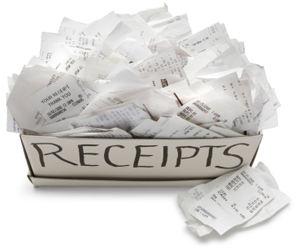Everyone is different when it comes to budgeting and money management. On the one hand, you’ve got people who rarely track where their paycheck is going and on the other hand you have the people who meticulously plan and track spending down to the penny.
While it’s obviously not wise to spend without documenting your purchases, there are easier ways of staying on top of your finances other than relying on an Excel spreadsheet. Here is a breakdown of the top three ways to manage your spending to help you decide on the best spending tracker for you.
1. Budgeting Options through Your Bank and Credit Card Company
One of the best and most obvious ways to keep track of your spending is through the very outlets where you keep your money. Almost all banks and credit card companies now offer budgeting graphs and charts, savings advice, spending reports (sorted by date, amount and venue) as well as overdraft alerts.
Simply create an online account with your bank or credit card company and check out what they offer in regards to spending tracker options. You’ll probably be surprised with how many useful tools they offer completely free of charge.
I would not suggest solely relying on these services though as they don’t go quite as in-depth as some of the other options out there. Use these budgeting options as your basic tracking method and then build on them with mobile apps.
2. Mobile Apps
Mobile apps like Mint and Jumsoft Money are great options for integrating your bank and credit card accounts into a central location. These apps are very simple to set up, extremely secure and offer real-time glimpses into your current financial standing.
The best part about using these apps is that they require very little effort on your part to keep them updated. Because they are integrated with your accounts, they know every time you make a purchase with one of your cards. They also have budgeting features that let you break down your budget exactly how you want it so you can get quick, graphical overviews of your spending over a certain period of time.
The only downside of these apps is that they don’t track your cash purchases. When you do make a cash purchase, it is up to you to data enter that purchase into the app. If you’re not the best at holding on to receipts when you make cash purchases though, then you might also want to implement a form of receipt management.
3. Receipt Scanning Apps
The best and most accurate spending tracker is one which allows you to sort and categorize based off of receipts.
Online banking features and mobile apps are really only good for broad categorization. Tracking your spending based off of receipts is a much more accurate and all-encompassing way of ensuring proper money management.
Receipt scanners and services like Shoeboxed.com make it extremely simple to digitize your receipts and save them in the cloud. The best part is that you can create expense reports and budgets that can be filtered all the way down to the itemized products you bought.
For example, let’s say that you bought a crib and baby clothes on your last trip to Wal-Mart. Your bank might classify the purchase as “Wal-Mart” while Mint and Jumsoft Money would classify it as “Retail” or “Shopping.” Receipt Scanners and services can actually classify the purchases as “Baby Supplies” or other specific designations due to their ability to create custom filters.
Do you have a method for tracking your spending that you would like to share with us? We’d love to hear about it in the comments section below!
